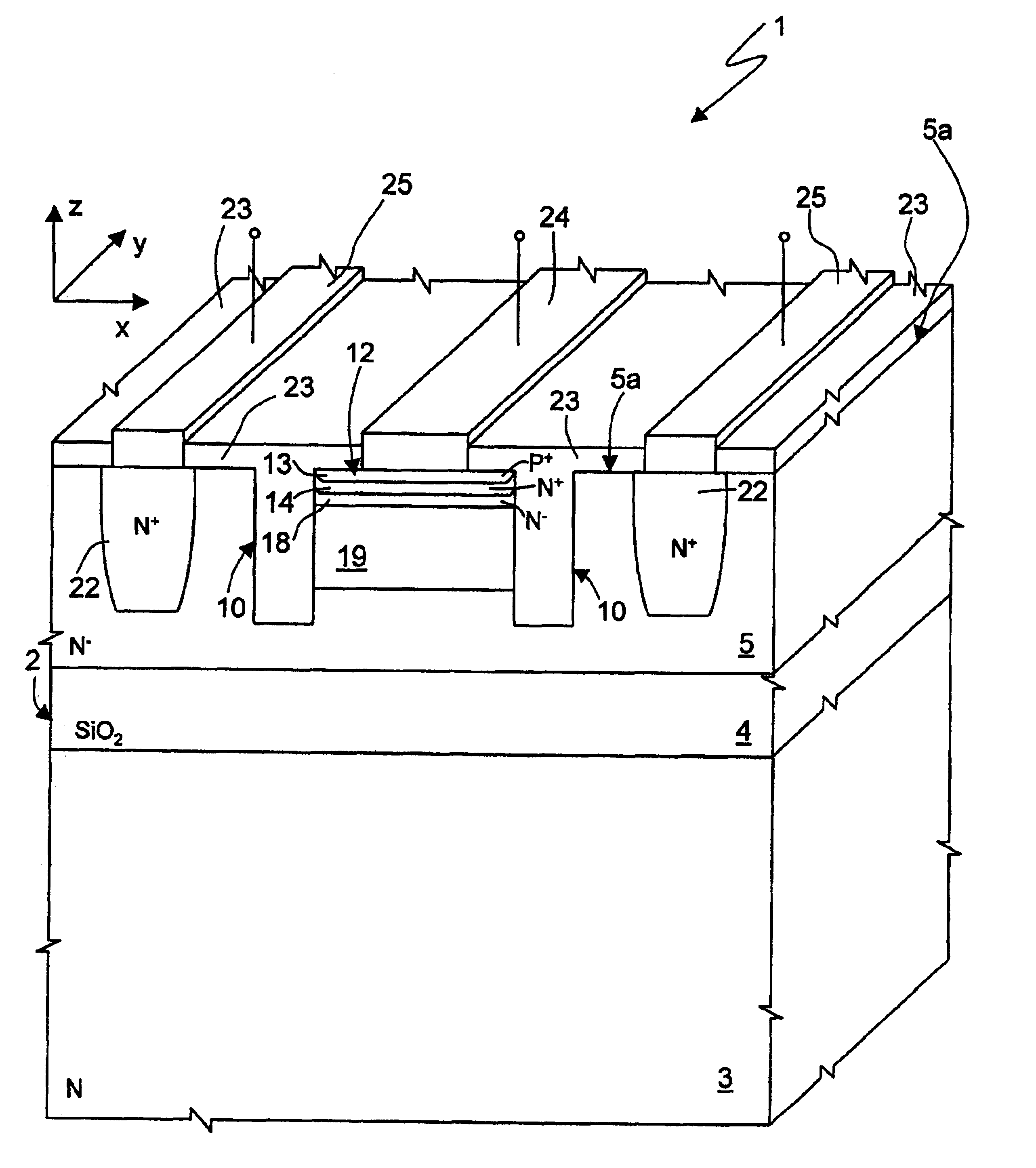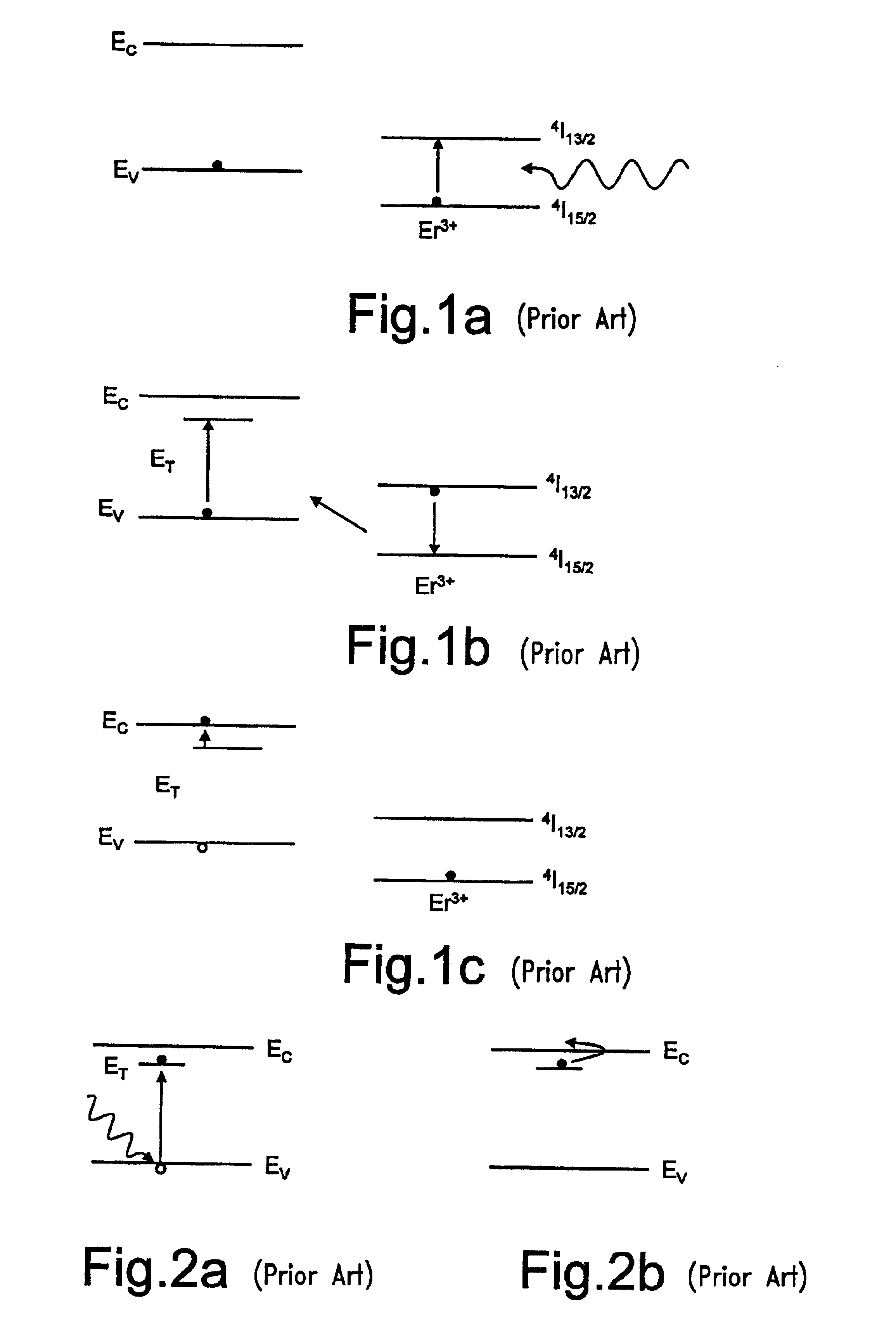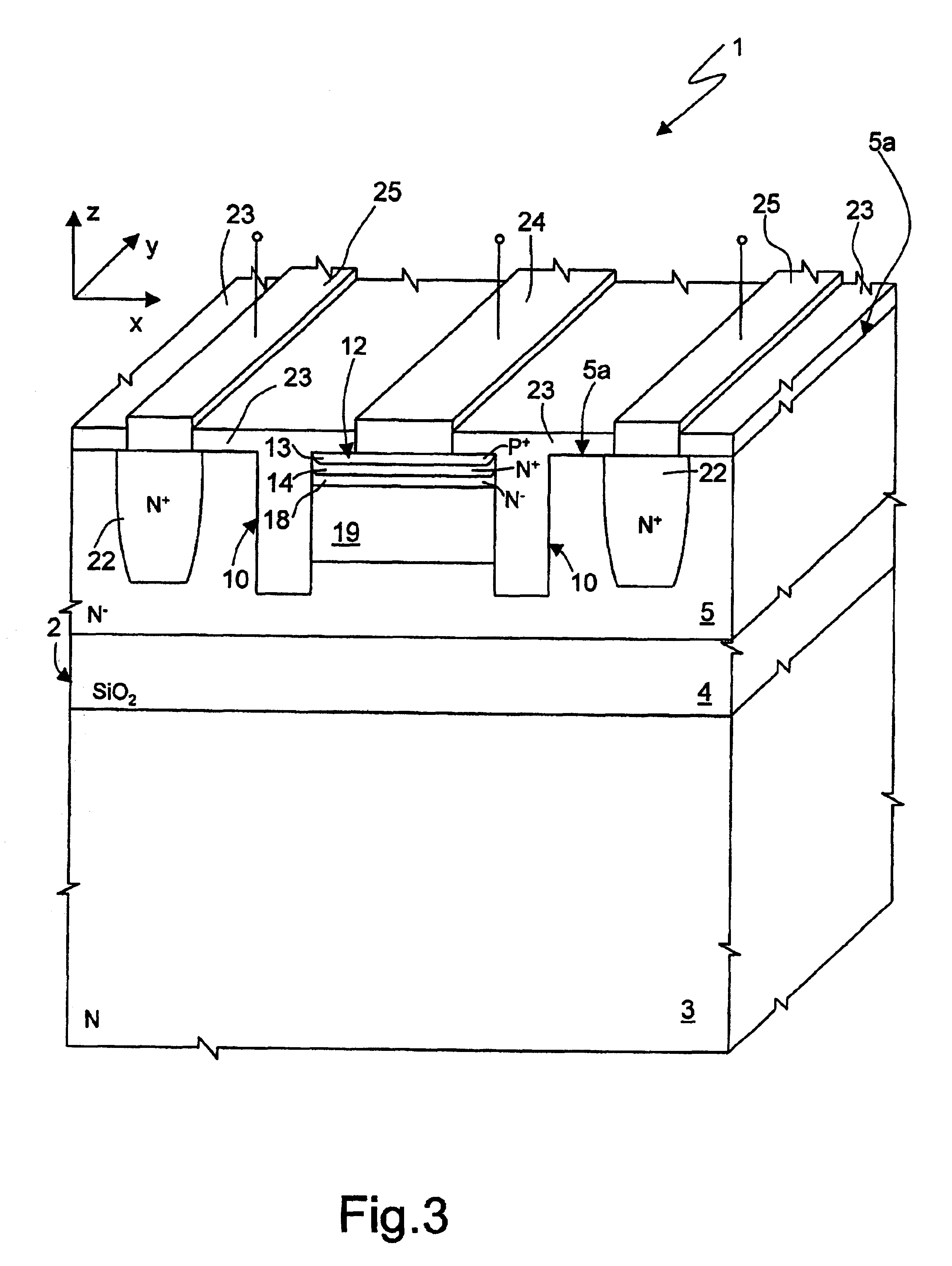High-gain photodetector with separated PN junction and rare earth doped region and a method of forming the same
- Summary
- Abstract
- Description
- Claims
- Application Information
AI Technical Summary
Benefits of technology
Problems solved by technology
Method used
Image
Examples
Embodiment Construction
[0024]FIG. 3 shows a cross-section of a portion of an integrated device housing a photodetector according to the invention.
[0025]In particular, as shown in FIG. 3, the photodetector, designated by 1, is formed in a silicon-on-insulator (SOI) substrate 2 including a first monocrystalline region 3 of N-type, an oxide region 4, and a second monocrystalline region 5 of N−-type, which has a top surface 5a.
[0026]Two trenches 10 extend inside the second monocrystalline region 5 and delimit laterally between them and active region 12 of the photodetector. The active region 12 comprises a surface region 13 of P+-type facing the top surface 5a of the second monocrystalline region 5; a junction region 14 of N+-type arranged directly beneath, and contiguous to, the surface region 13; a separation region 18 formed by the second monocrystalline region 5, and thus of the N−-type; and a sensitive region 19, doped with a rare earth, for example erbium (Er), holmium (Ho), neodymium (Nd), or promethi...
PUM
 Login to View More
Login to View More Abstract
Description
Claims
Application Information
 Login to View More
Login to View More - R&D
- Intellectual Property
- Life Sciences
- Materials
- Tech Scout
- Unparalleled Data Quality
- Higher Quality Content
- 60% Fewer Hallucinations
Browse by: Latest US Patents, China's latest patents, Technical Efficacy Thesaurus, Application Domain, Technology Topic, Popular Technical Reports.
© 2025 PatSnap. All rights reserved.Legal|Privacy policy|Modern Slavery Act Transparency Statement|Sitemap|About US| Contact US: help@patsnap.com



